

| This area shows pictures taken from the interception and penetration of hurricane Andrew in southern Dade county in Florida on August 24, 1992. This storm formed in the Atlantic and moved through the Bahamas before smashing ashore south of Miami during the wee hours of the morning. Lack of light limited photography of the storm eyewall. The storm produced winds sustained at 165-MPH with gusts near 200-MPH. Highest winds in the chase area were gusts to 168 MPH. Andrew, originally a category 4 storm and upgraded 10 years later by the National Hurricane Center in late 2002 to a category 5, caused at least 25 BILLION dollars in damages, the costliest natural disaster in United States history (until hurricane Katrina struck the Gulf coast in 2005)! |
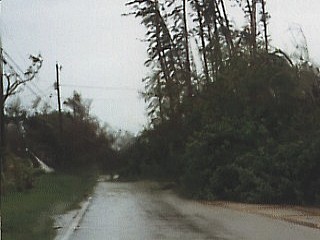
|
Trees block a roadway in South Kendall, Florida on the morning of August 24, 1992. The chase required a hunker down in a shelter when the worst part of the storm came by. The picture above was while trying to drive out of the disaster area. The hurricane is still in progress with winds over 75 MPH and torrential rains while this picture was taken. |
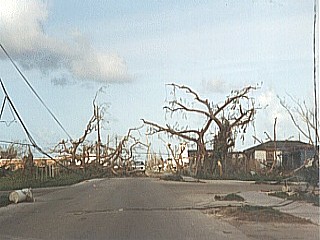
|
A street in Homestead, Florida on August 25, 1992. This was one day after Hurricane Andrew passed through this area with 165 MPH sustained winds. Damage is extensive, comparable to that of a strong tornado 20 miles wide! |
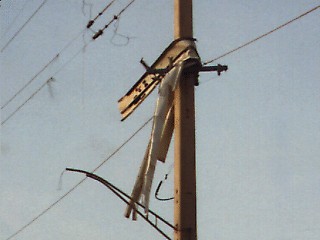
|
In Homestead, Florida on August 25, 1992, debris lies hung in the powerlines and utility poles along Highway US 1. During the hurricane eyewall one day earlier, the air literally became filled with flying debris at aircraft speeds. These "missles" are capeable of destroying everything in their path. |
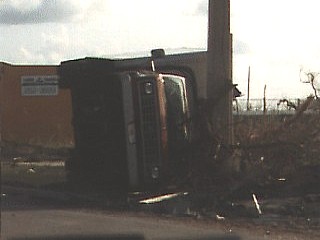
|
A utility truck comes to rest on its side along Highway US 1 in Homestead, Florida on August 25, 1992. The truck tumbled across the highway during the 165 MPH winds in the storm and slammed into the concrete utility pole. |
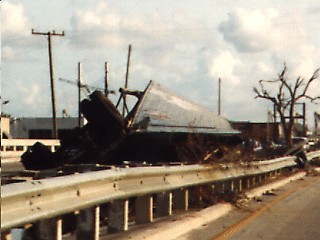
|
A mangled tractor trailer lies on the median of Highway US 1 in Homestead, Florida on August 25, 1992. The truck was literally launched by at least 165-MPH winds and carried for some distance before coming to rest on the median barrier. |
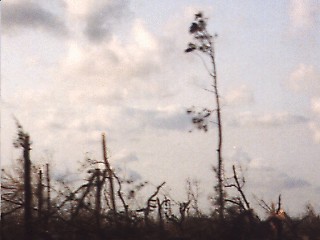
|
After hurricane Andrew a forest lies nearly completely leveled in Homestead, Florida on August 25, 1992. The forest was along Highway US 1 in a heavily wooded area. Nearly every tree was knocked down by the category-5 forced hurricane winds. In some places, you could actually see the horizon through the downed trees! |
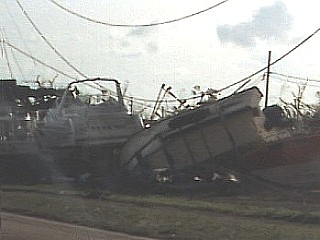
|
Along Highway US 1 in Homestead, Florida on August 25, 1992. Boats lie wrecked on the west side of the street, probably pushed from a marina by the 18 foot storm surge. |
HTML File "andrew92.htm" - Developed By Chris Collura
To Return To The HOME Page Of This Site Click The "INDEX.HTM" Link Here!